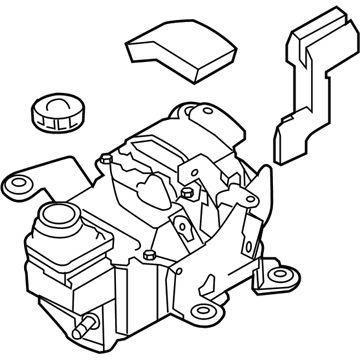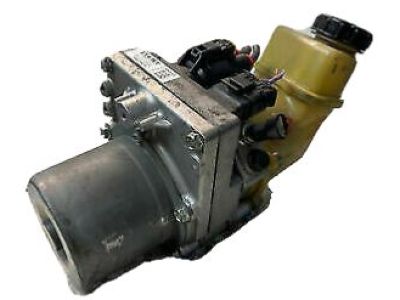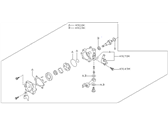×
- Hello
- Login or Register
- Quick Links
- Live Chat
- Track Order
- Parts Availability
- RMA
- Help Center
- Contact Us
- Shop for
- Nissan Parts
- Nissan Accessories

My Garage
My Account
Cart
Genuine Nissan Quest Power Steering Pump
Power Steering Pump Unit- Select Vehicle by Model
- Select Vehicle by VIN
Select Vehicle by Model
orMake
Model
Year
Select Vehicle by VIN
For the most accurate results, select vehicle by your VIN (Vehicle Identification Number).
12 Power Steering Pumps found

Nissan Quest Pump Assy-Electric Power Steering
Part Number: 49110-3JW5B$1359.50 MSRP: $1789.53You Save: $430.03 (25%)Ships in 1-3 Business Days
Nissan Quest Pump Assy-Electric Power Steering
Part Number: 49110-1JA5B$1359.50 MSRP: $1789.53You Save: $430.03 (25%)Ships in 1-3 Business DaysNissan Quest Pump Assy-Power Steering
Part Number: 49110-ZF00A$487.49 MSRP: $741.62You Save: $254.13 (35%)Ships in 1-3 Business DaysNissan Quest Pump Assy-Electric Power Steering
Part Number: 49110-1JA5D$1359.50 MSRP: $1789.53You Save: $430.03 (25%)Ships in 1-3 Business DaysNissan Quest Pump Assy-Electric Power Steering
Part Number: 49110-1JA5E$1359.50 MSRP: $1789.53You Save: $430.03 (25%)Ships in 1-3 Business DaysNissan Quest Pump Assy-Electric Power Steering
Part Number: 49110-3JW5A$1359.50 MSRP: $1789.53You Save: $430.03 (25%)Ships in 1-3 Business Days
Nissan Quest Power Steering Pump
If you need any OEM Nissan Quest Power Steering Pump, feel free to choose them out of our huge selection of genuine Nissan Quest Power Steering Pump. All our parts are offered at unbeatable prices and are supported by the manufacturer's warranty. In addition, we offer quick shipping to have your parts delivered to your door step in a matter of days.
Nissan Quest Power Steering Pump Parts Questions & Experts Answers
- Q: How do you remove the power steering pump on Nissan Quest?A:First of all, the cable of your vehicle's negative battery terminal needs to be detached when you are removing the power steering pump. With the help of a large syringe or suction gun, it will be possible to remove as much of the old fluid as it will be possible, and you have to place a drain pan under the car to catch the dropping of connections with hoses. Chock the wheels and then jack up the car to a safe and suitable height which it can be supported only by the jackstands. Replacing the pressure hose: If possible, unfavourable position because it's located in the engine bay, remove the pressure line-to-pump fitting or banjo bolt that connects the high-pressure hose of the power steering pump and the return hose mounting bolt, remove the line on the pump and throw away the copper sealing washers that MUST be changed after when reconnecting the hose. Remove the bolt and pull out the stick towards you and separate the fluid return hose from the pump. Taking off the power steering pump first countersinker the drivebelt, then put a strap wrench around the pulley, unscrewing the pulley bolt with a socket and a breaker bar. Subsequently, undo the pump mounting bolt; there are three bolts to be undone on the front and one at the rear side, and then you extract the pump out of the car. In installation, the removal process step should be followed in reverse with an added touch of having to tighten the pressure line fitting or banjo bolt to the requisite torque and the drivebelt tension. Last, replenish the amount of the fluid inside the reservoir and perform a bleed.
Related Nissan Quest Parts
Browse by Year
2017 Power Steering Pump 2016 Power Steering Pump 2015 Power Steering Pump 2014 Power Steering Pump 2013 Power Steering Pump 2012 Power Steering Pump 2011 Power Steering Pump 2010 Power Steering Pump 2009 Power Steering Pump 2008 Power Steering Pump 2007 Power Steering Pump 2006 Power Steering Pump 2005 Power Steering Pump 2004 Power Steering Pump 2003 Power Steering Pump 2002 Power Steering Pump 2001 Power Steering Pump 2000 Power Steering Pump 1999 Power Steering Pump 1998 Power Steering Pump 1997 Power Steering Pump 1996 Power Steering Pump 1995 Power Steering Pump 1994 Power Steering Pump 1993 Power Steering Pump



















